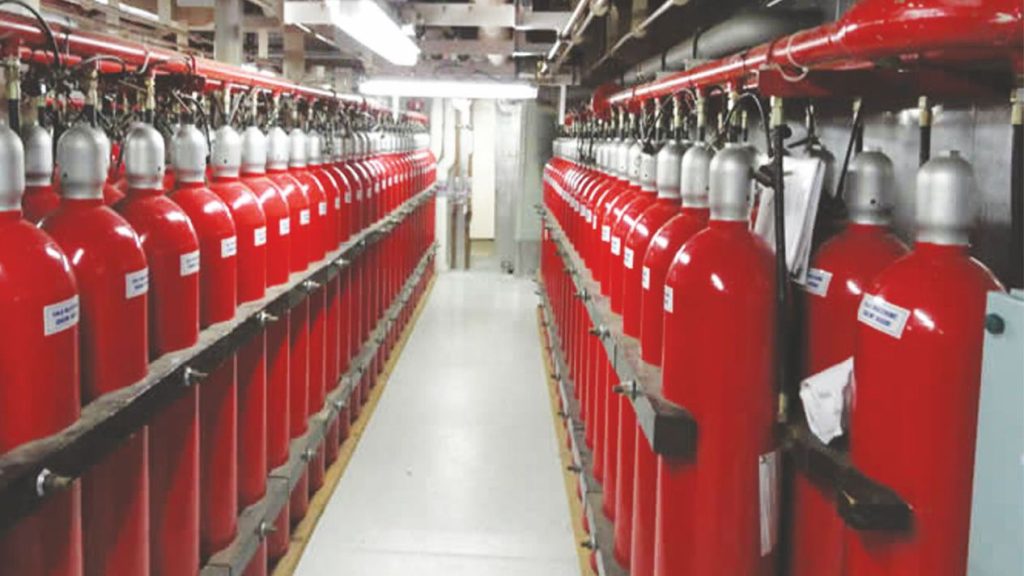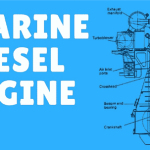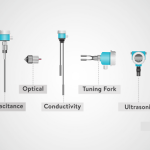Ships engine rooms are susceptible to fires and explosions, as well as the engines themselves. However, there is firefighting equipment in a ships engine room to combat these hazards, such as hand held fire extinguishers and seawater hydrants/ hoses; CO2 or mist injection being used in engine spaces
As long as men have gone to sea in ships there has been a fear of fire aboard; more so on the old wooden hulled sailing ships than today’s modern ships. However major fires still occur on modern ships accounting for a large number of lives lost, especially on cruise ships and ferries.
Ship’s engine rooms are the usual sources of shipboard fires; either from a fire in the engine room, or an engine internal fire or explosion causing a subsequent fire. The main portable means of fire fighting equipment are the different types of hand held extinguishers. These are located throughout the engine room at different levels, along with hoses and hydrants supplied by the seawater pumps. Fires in the engine internal spaces can be attacked and extinguished using inert gas such as CO2, foam, or water mist sprays.
The following sections examine the firefighting equipment used in today’s modern engine rooms. The first sections deals with the common causes of fires in the engine room.
Common Causes of Shipboard Fires
The causes of engine room fires can usually be traced back to a lack of maintenance or bad watchkeeping practices. They are usually caused by fuel spills, overheating components or careless use of electric welding or gas brazing gear.
Oil Spills
It is imperative to combat the risk of engine room fires by maintaining the fuel and lube oil systems, more so on diesel engine ships than steam turbines; although I have had a few hairy oil-fired boiler room moments where the donkey man has used sawdust to mop up burner oil spills, instead of sand from the old red-painted sand bucket. There must be constant vigilance against leaking oil of any type, pipes and unions being especially vulnerable. Any leaking or damaged fuel pipe should be reported to the senior engineer immediately. There is not much you can do about oil spraying onto a hot exhaust, except shut off the supply and fight the fire, however but engine room housekeeping is another matter, this is something that we can all participate in.
○ Engine room Housekeeping
The engine room should be kept clean and tidy, free from inflammable materials such as wooden crates, cardboard boxes, oily rags and paper. Any oil spills cleaned up immediately and the source investigated, repaired and logged. An engine room No Smoking Policy should be enforced, which should stop people stubbing out their cigarette ends in a sand bucket!
Repairs
The repair of components by welding and brazing is common practice in ships engine rooms. However, both are potential fire hazards, due to the electric-arcing of the welding rod and the open flame on the brazing torch tip. There is also the additional hazard when welding where the ensuing molten metal can fall down through several floors into the bilges.
It is therefore imperative that the component for repair should be brought to the engine room workshop. If this is not possible, then a fire retardant blanket should be laid under the component to be welded or brazed. A fire watcher should be employed to keep an eye on the proceedings; with a set of extinguishers to hand.
Engine Room Fire Fighting Equipment
○ Engine room Sprinkler System
This is of the more modern type of water nozzles that actually supply a very fine mist, rather than a flow of water. These systems cover of different areas of the engine room, but not the switchboard or the electrical generating component of the power generators. The sprinkler system can be operated automatically by sensors or manually by the engineer. This starts the water booster pump and opens up the compressed air supply which can be from dedicated high pressure air bottles or the engine air-start receivers.
As we all know water is not normally used on oil fires but, because fine mist is injected into the area it not only starves the fire of oxygen, but also dissipates the smoke.
○ Engine room Fire Extinguishers
There are four main types of fire extinguishers all colored red nowadays, with a different colored band around the top of the body, denoting the type of medium it contains. They are operated by removing the protective pin, before pulling the trigger smartly.
Fire extinguishers are usually stored in a container together as shown below in a group of four; one of each type. The containers are positioned at different levels in the engine room at high fire risk locations.
The four types are,
○ Dry Powder Fire Extinguisher– it has a black band around the body and is used for extinguishing electrical and liquid fires.
○ Foam Fire Extinguisher – this has a yellow band around the body and is used for extinguishing oil fires.
○ Water Fire Extinguisher – this has a red band contained between two thin white bands around the body. It is used to extinguish paper, wood and cloth.
○ CO2 Fire Extinguisher – this has a black band around the body and is used to extinguish electrical and liquid fires.
Remember, only the Dry Powder and CO2 extinguishers should be used on electrical fires.
○ Fire Hydrants and Hoses
These are positioned throughout the engine room; a fire axe is sometimes alongside the fire hoses. The hydrant valves should be opened; hoses run out and discharged to the bilges at regular intervals to ensure operation.
○ Aqueous Film Forming Foam
Known as AFFF and (pronounced A triple F) was developed in the sixties and is a great innovation to firefighting not only in ships engine rooms, but on oil and gas platforms worldwide. AFFF is supplied in its own containers and added to an AFFF storage tank and is operated by pressurized seawater. The seawater mixes with the specialist liquid and exits the 11/2″ rubber hose through a brass nozzle as a pressurized film of thick, viscous foam. This is directed to the base of the fire, quickly smothering the flames, dissipating the heat, smoke and fumes.
Prevention and Control
The two main causes of engine room fires are scavenge fires and crankcase explosions occurring on the main diesel engines. Both can be detected and prevented if discovered early enough. The scavenge fire is detected by high exhaust temperature, paint peeling of the scavenge door or the Mate phoning down to inform us of black smoke and sparks emitting from the flue.
The much more serious crankcase explosion is caused by a build up of lube-oil mist inside the crankcase. This triggers the oil-mist detector and the alarm will sound, giving the engineer enough time to slow down the engine allowing it cool. In the event of an explosion, the explosion relief devices on the crankcase doors will lift. This device prevents injury from a flying crankcase door; the fine wire mesh in the relief valve taking the heat out of the flames, reducing the risk of fire. The explosion door re-closes immediately, preventing any entry of fresh oxygen entering the crankcase promoting further explosion and fire.
Both the above hazards have similar fire control methods; injection of CO2 or water mist into the scavenge space and injection of CO2 into the crankcase. The inspection doors must remain shut until the relevant components and spaces have cooled down.
Firefighting Team and Equipment
This is a dedicated team with a team leader in charge, who attend regular courses when on leave. The team is usually made up from members of the crew, engine room and deck officers. They practice fire drill, evacuation and rescue operations regularly on the deck, accommodation and engine room areas.
Breathing Apparatus Set
The BA set consists of an oxygen tank which is strapped to the firefighters back, supplying a full face mask with oxygen.
Personal Protection
This consists of loose fitting fire retardant clothes, fire retardant boots and a yellow fireman’s safety helmet; team leader having a red band around his helmet.


